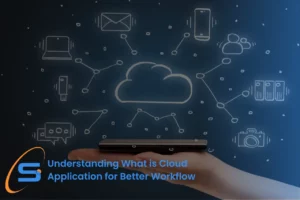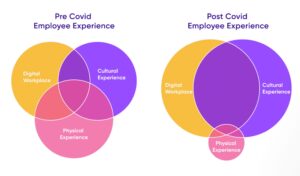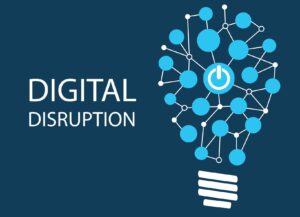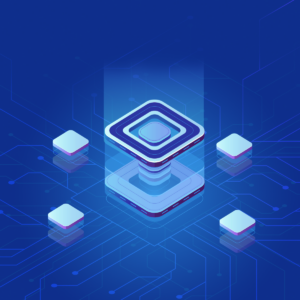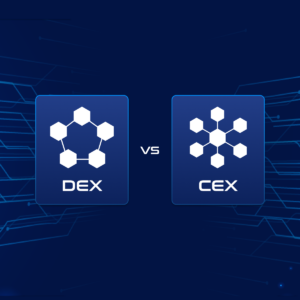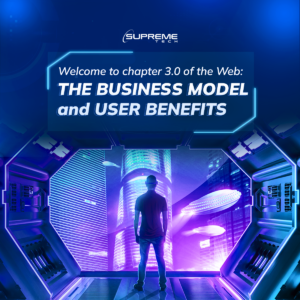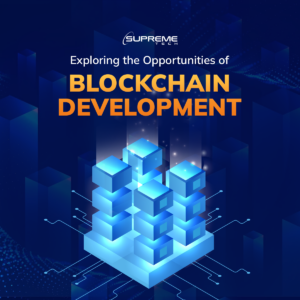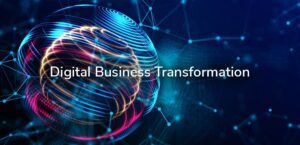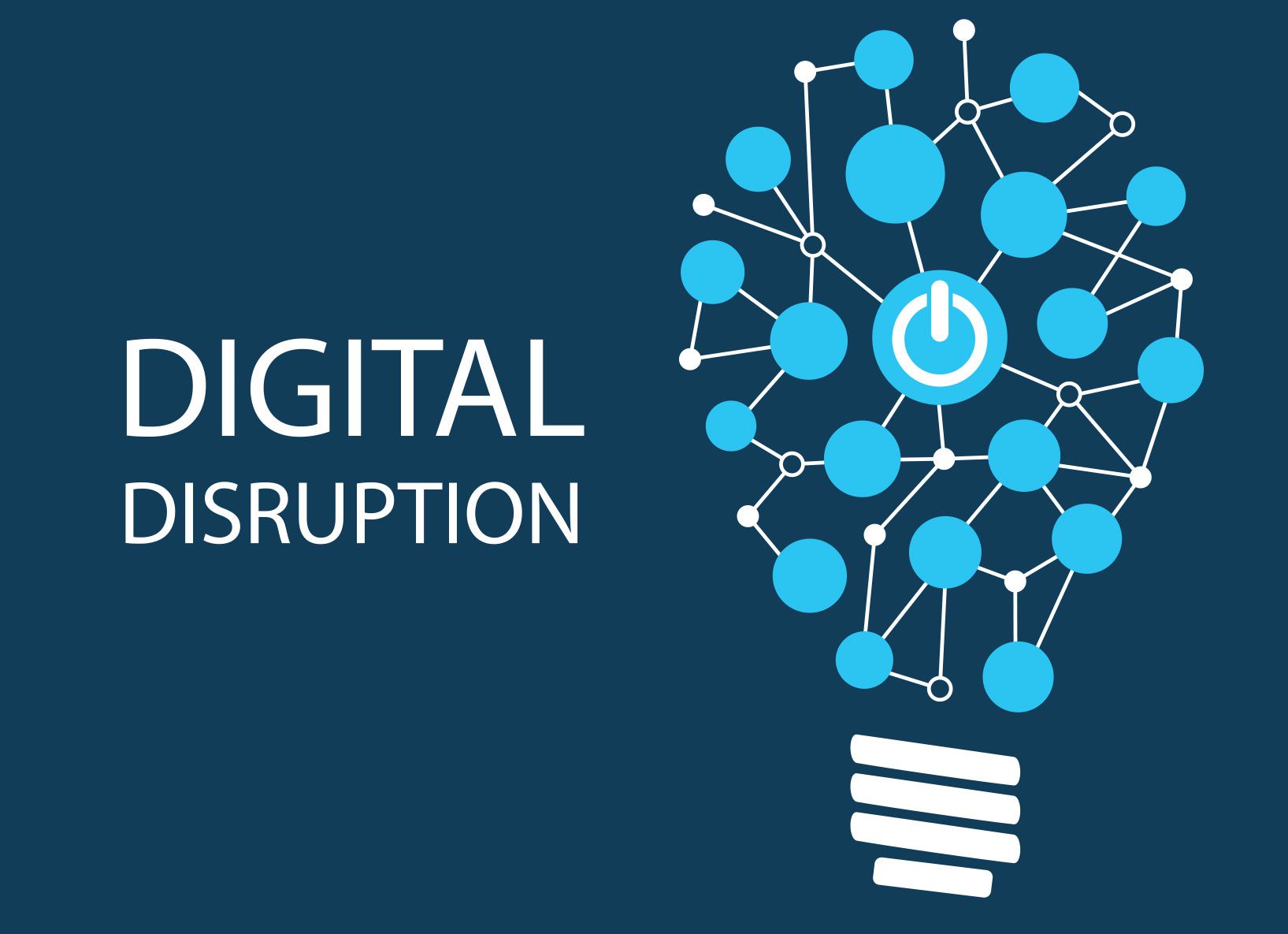Knowledge
Software Development
+0
Understanding What is Cloud Application for Better Workflow
Cloud computing has grown significantly for enterprises of all sizes in the digital transformation era. Partnering with cloud service providers for their computing requirements helps businesses streamline their processes and boost productivity. Cloud applications are one of the main elements of cloud computing. But what precisely is a cloud application? We will delve deeper into the idea of cloud applications in this post and examine how they might help companies of all sizes. What is a Cloud Application? Cloud applications are software programs that can be accessed from any device via the internet. These apps are hosted on remote servers and employ cloud computing technologies to give users access to their data and software from anywhere. Cloud apps have several advantages over traditional desktop programs, such as scalability, cost-effectiveness, and flexibility. Users may effortlessly interact with others, access their data from anywhere, and enjoy automated upgrades and backups with cloud applications. Google Docs, Dropbox, and Salesforce are examples of popular cloud applications. Cloud apps are becoming increasingly vital for businesses trying to improve their efficiency, productivity, and bottom line as more enterprises migrate to the cloud. Source: Great Learning On Premise Vs Cloud: What to Know Before Making a Decision? Benefits of Using Cloud Applications With cost savings, increased collaboration, and enhanced data security, cloud applications can help businesses stay competitive and agile in a constantly evolving business environment. Accessibility and Remote Work Cloud-based technologies have completely transformed remote work and collaboration. Employees can access their business applications and data using cloud technology from anywhere worldwide as long as they have internet access. For businesses and their employees, this has increased the accessibility and flexibility of remote work. To exchange and collaborate on documents, presentations, and spreadsheets in real-time, remote workers now primarily rely on cloud applications like Google Workspace, Microsoft Office 365, and Dropbox. ⇒ You might like: Efficient Ways for Increasing Working From Home Productivity Source: Balboa Capital Cost-effectiveness and Scalability The cost savings of using cloud apps are among its most important advantages. Businesses must invest in costly licensing and hardware to run traditional software solutions, which may be a financial strain. On the other hand, cloud applications are often subscription-based, so organizations only pay for what they use. The requirement for companies to buy and maintain their own servers and storage devices is also removed by cloud apps. This lowers the upfront cost of technology as well as the continuing expenditures of upkeep and updates. All of these responsibilities are handled by cloud service providers, freeing enterprises to concentrate on their core capabilities. Enhanced Security and Data Protection To protect the data of their clients, cloud service companies often implement strong security measures. Data encryption, multiple-factor authentication, and regular backups are some of these security methods. Businesses can also be protected from unexpected events like fires and floods by storing data in the cloud. A disaster could result in the loss of all the data if it is kept on physical devices in one place. Moreover, data is always available when needed due to cloud storage because it can always be accessed from many locations. Improved Collaboration and Communication Team members can work together on the same files and documents in real time using cloud applications from any location. For remote teams or companies with multiple offices, this is very valuable. Collaboration with clients and external partners is also made simple by cloud applications. Users can simply share a link to the cloud-based material instead of emailing big files or depending on local storage devices. Version control problems are less likely as a result, and time is saved. Faster Deployment and Updates Organizations would need to go through time-consuming and expensive procedures to install upgrades or new software while using traditional software. This procedure frequently required visiting each computer or device and manually installing the updates. With cloud applications, this isn't the case anymore. Cloud apps have completely transformed the way businesses conduct software deployment and upgrades. Businesses can release changes using cloud applications in a matter of minutes as opposed to days or weeks. This enables businesses to keep one step ahead of the competition and seize fresh possibilities as they present themselves. Types of Cloud Applications Here are the three major types of cloud applications, including Software as a Service (SaaS), Platform as a Service (PaaS), and Infrastructure as a Service (IaaS). Source: GoodCore Software Software as a Service (SaaS) SaaS is a cloud application model that uses the internet to distribute software applications. Salesforce, Google Apps, and Microsoft Office 365 are well-known SaaS examples. SaaS may help businesses by lowering IT expenses, boosting productivity, and expanding scalability. Users don't need to install or maintain software on their devices when using SaaS. Instead, they have the option of using a web browser or a mobile app to access the software, which is housed on a cloud server. It does away with the pricey hardware, software licensing, and IT personnel requirements. SaaS may, however, have certain negative aspects. Businesses cannot control their data completely because the software is hosted on a cloud server. Additionally, organizations might be unable to adjust the program to meet their unique requirements fully. Platform as a Service (PaaS) Platform as a Service (PaaS) is a cloud-based program that offers programmers a platform for creating, testing, and deploying unique applications. PaaS provides a full development environment, including tools, frameworks, and libraries, to assist developers in swiftly building and deploying applications. Businesses that need to create unique applications but don't want to invest in infrastructure or IT personnel might consider PaaS. Heroku, Google App Engine, and Microsoft Azure are a few PaaS instances. On the negative side, companies might be unable to fully tailor the platform to meet their unique requirements. Additionally, businesses could rely on the platform provider for upgrades and upkeep. Infrastructure as a Service (IaaS) Businesses can access virtualized computer resources, including servers, storage, and networking, through the Infrastructure as a Service (IaaS) cloud model. Businesses can rapidly provision and de-provision computing resources with IaaS, enabling them to scale up or down as necessary. The most prevalent IaaS examples include Google Cloud Platform, Microsoft Azure, and Amazon Web Services. For companies that need to host unique applications or websites but don't want to invest in real hardware, IaaS is a popular option. Businesses can save money by using IaaS to avoid the expenses of buying and maintaining actual accessories like servers and storage units. The disadvantage is that enterprises might not be able to alter the infrastructure to meet their own requirements completely. Source: Enterprise Talk Conclusion: Adopting Cloud Applications with SupremeTech SupremeTech recognizes the value of cloud computing for organizations of all sizes. We provide a variety of cloud computing services, such as SaaS, PaaS, and IaaS, to assist enterprises in improving operational efficiency and agility. Our experts can assist you in determining the best cloud computing option for your company and give continuous support to ensure your success. If you're interested in implementing cloud applications for your company, contact us today to learn more about Cloud infrastructure and DevOps service and how we can help you achieve your objectives.
29/04/2023
1.21k














